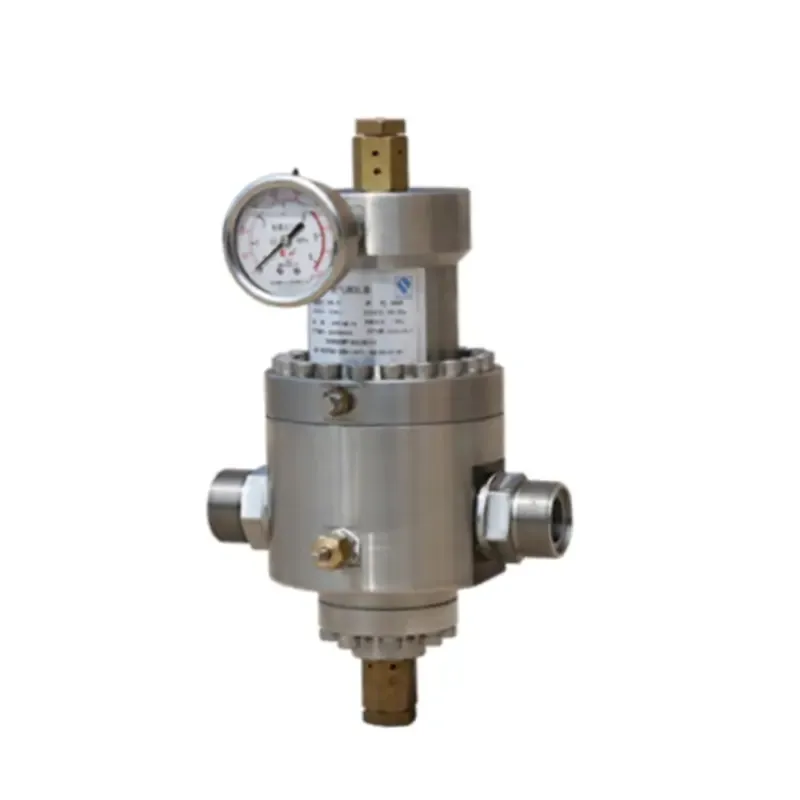
Nov . 05, 2024 07:22
Back to list
pressure reducer
Understanding Pressure Reducers Essential Components for Pressure Control
In various industrial applications, maintaining the correct pressure is vital for operational efficiency and safety. This is where pressure reducers come into play. A pressure reducer is a device designed to lower the pressure of a fluid, typically gas or liquid, to a predetermined level, ensuring that systems operate within their designed parameters. In this article, we will delve into the significance, workings, applications, and maintenance of pressure reducers.
What is a Pressure Reducer?
A pressure reducer, also known as a pressure regulator, is an essential component in many fluid control systems. Its primary function is to decrease the high inlet pressure of a gas or liquid to a lower, more manageable outlet pressure. This mechanism not only ensures safe operation but also protects downstream equipment from potential damage caused by excessive pressure.
Pressure reducers can be found in a wide range of applications, from household systems such as gas stoves and water heaters to large-scale industrial processes in manufacturing plants, chemical processing, and power generation.
How Do Pressure Reducers Work?
The operation of a pressure reducer is based on the principles of fluid dynamics and mechanical engineering. Typically, the device consists of a spring-loaded diaphragm that reacts to changes in pressure. The inlet side receives fluid at high pressure, while the outlet side is directed towards the application requiring lower pressure.
When fluid enters the pressure reducer, it pushes against the diaphragm. If the pressure on the outlet side exceeds the set point, the diaphragm moves to close off the inlet flow until equilibrium is achieved. Conversely, if the outlet pressure drops below the threshold, the diaphragm reopens, allowing more fluid to flow through. This process is continuous, ensuring that the outlet pressure remains stable despite fluctuations in the inlet pressure.
Applications of Pressure Reducers
pressure reducer

The applications of pressure reducers are vast and varied. In residential settings, pressure regulators ensure that natural gas is delivered at a safe and usable pressure for cooking and heating. Similarly, water pressure regulators help maintain consistent water pressure in plumbing systems, preventing damage to pipes and fixtures.
In industrial contexts, pressure reducers are critical in manufacturing processes that involve gas or fluid transport. They are commonly used in pneumatic systems, where compressed air is utilized for powering machinery. Additionally, pressure reducers are essential in chemical processing facilities, where precise pressure control can affect reaction rates and product quality.
Moreover, pressure reducers play a pivotal role in medical applications. In hospitals, they regulate the oxygen supply to patients, ensuring that the delivered pressure is safe and effective.
Maintenance of Pressure Reducers
To ensure optimal performance, regular maintenance of pressure reducers is necessary. This includes inspecting the device for wear and tear, tightening any loose connections, and testing the pressure settings. It is also essential to clean filters and vents to prevent blockages that could lead to pressure fluctuations or failures.
In some cases, it may be beneficial to replace aging or malfunctioning pressure reducers preemptively rather than waiting for a failure that could impact operations or safety. Proper documentation and adherence to manufacturer guidelines in maintenance practices will prolong the lifespan and reliability of these critical devices.
Conclusion
Pressure reducers are crucial components in a wide array of systems, ensuring that pressure levels are kept within safe and effective limits. Their ability to automatically adjust and maintain required pressures makes them indispensable in both residential and industrial applications. Understanding their function, applications, and maintenance can greatly enhance the efficiency and safety of systems that rely on controlled pressure. As technology evolves, pressure reducer designs are likely to become even more sophisticated, offering improved performance and reliability in various fields.
Latest news
-
Safety Valve Spring-Loaded Design Overpressure ProtectionNewsJul.25,2025
-
Precision Voltage Regulator AC5 Accuracy Grade PerformanceNewsJul.25,2025
-
Natural Gas Pressure Regulating Skid Industrial Pipeline ApplicationsNewsJul.25,2025
-
Natural Gas Filter Stainless Steel Mesh Element DesignNewsJul.25,2025
-
Gas Pressure Regulator Valve Direct-Acting Spring-Loaded DesignNewsJul.25,2025
-
Decompression Equipment Multi-Stage Heat Exchange System DesignNewsJul.25,2025

